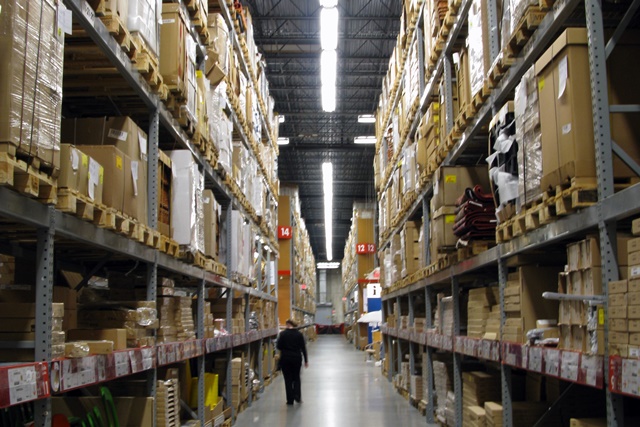2 Apr. 2021. An engineering lab studying wireless technologies developed a robotic arm using radio waves to find and grab objects blocked from direct view. A team from the Signal Kinetics research group at Massachusetts Institute of Technology describe the system in a paper to be delivered next month at the IEEE International Conference on Robotics and Automation.
Robotic technology is advancing rapidly in manufacturing and distribution, particularly for picking and packing items stored in warehouses. Up to now, however, robots designed for selecting items in warehouses relied on components with a direct view of an object or bar code. In real-world settings, objects are jumbled, obscured, or stored in packaging materials that block some or all of the visual target.
Researchers led by Tara Boroushaki, a researcher in the Signal Kinetics group, designed a system called RF-Grasp, that uses radio frequency, or RF waves, along with computer vision to overcome these limits. RF-Grasp relies on RF tags, simple and inexpensive circuits that emit RF signals, used for years to deter shoplifting in retail stores but also to track items in warehouses. RF-Grasp has an RF signal reader that captures and relays the signals to the system controller.
RF-eye-hand coordination
Mounted next to the grasper hand in the robotic arm is a camera that captures video images of the arm’s surroundings. Those images are combined with the RF signals, which together are processed by a deep-learning algorithm that provides policies and directions to the system for locating the target object. But those directions go a step further: they also tell RF-Grasp how to uncover or declutter the item’s storage location to safely grab the object and put it in a selection box. As RF-Grasp gets more experience, the machine-learning algorithm gains more sophistication and nuance to navigate future tasks.
The algorithm decides which sensing mode to use — RF signals or camera — and directs the robotic arm to the object, switching back and forth between the two modes as needed. “The robot has to decide, at each point in time, which of these streams is more important to think about,” says Boroushaki in an MIT statement. “It’s not just eye-hand coordination, it’s RF-eye-hand coordination. So, the problem gets very complicated.”
In their paper, Boroushaki and colleagues report on a demonstration of RF-Grasp. A video of the demonstration shows the robotic arm sifting through open boxes cluttered with packing paper initially obscuring the target objects, removing the packing paper, then dropping the selected items in a separate box. The paper also reports on finding items hidden behind barriers. The researchers report RF-Grasp improved completion rates and efficiency by 40 to 50 percent over baseline measurements.
Fadel Adib, director of the Signal Kinetics group believes RF-Grasp could have applications in the home as well as in business. “Or you could imagine the robot finding lost items,” notes Adib. “It’s like a super-Roomba that goes and retrieves my keys, wherever the heck I put them.”
More from Science & Enterprise:
- Micro Robotic Neuro Therapy Company Underway
- Micro Robot Designed to Aid Internal Laser Surgery
- Organ Chip Systems Simulate Full Body Drug Responses
- Algorithm-Designed Robots Made from Living Cells
- Touch Sensor Developer Gains $12M in Early Funds
* * *


 RSS - Posts
RSS - Posts
You must be logged in to post a comment.